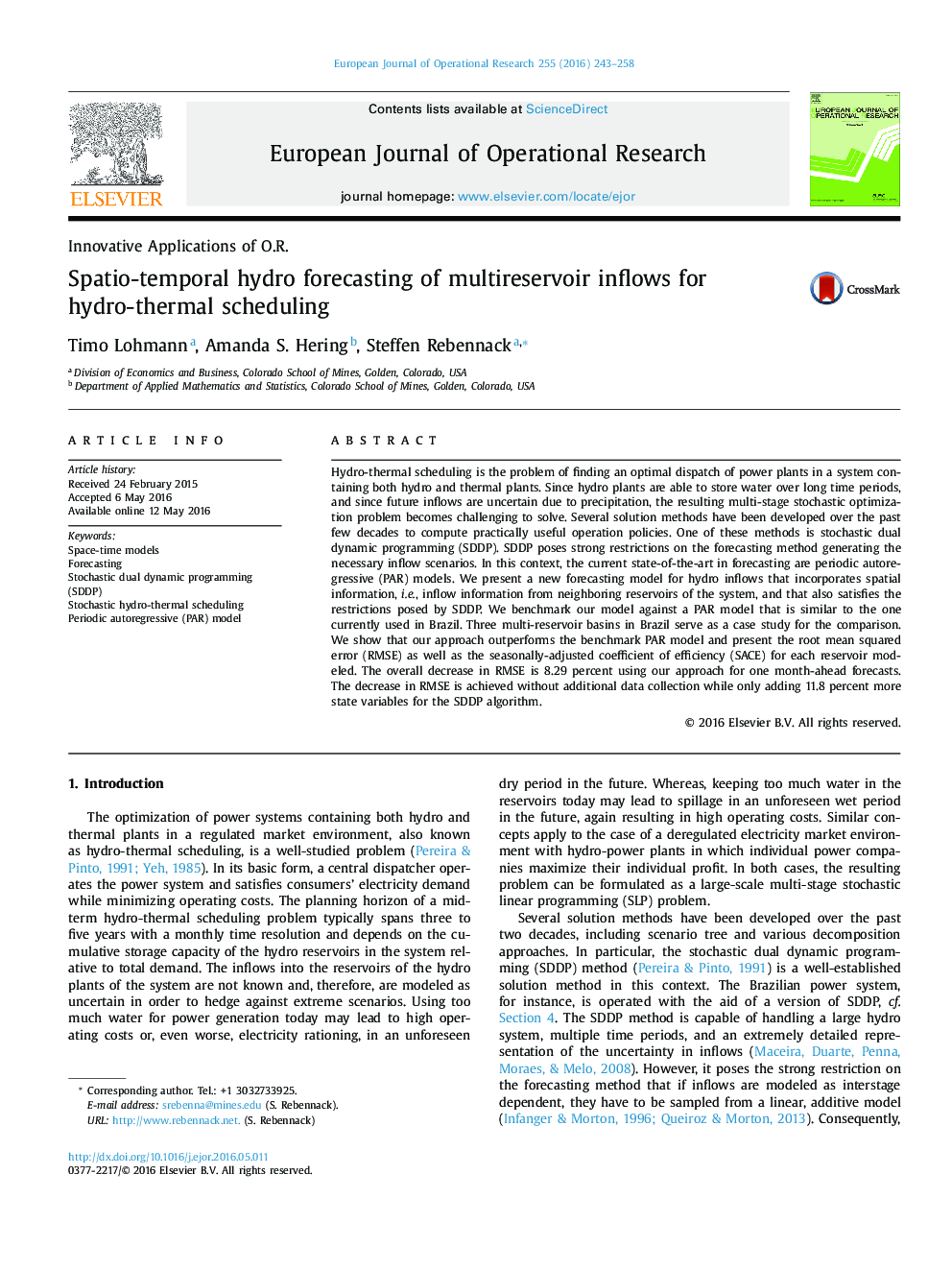| Article ID | Journal | Published Year | Pages | File Type |
|---|---|---|---|---|
| 480433 | European Journal of Operational Research | 2016 | 16 Pages |
•We improve the current PAR model used in Brazil by considering spatial information.•We develop a spatio-temporal forecasting model with a monthly fidelity.•We derive Benders cuts for the SDDP method when using our forecasting model.•We discuss parameter reduction with regard to deseasonalization and model fitting.•We describe the scenario generation process for use with the SDDP method.
Hydro-thermal scheduling is the problem of finding an optimal dispatch of power plants in a system containing both hydro and thermal plants. Since hydro plants are able to store water over long time periods, and since future inflows are uncertain due to precipitation, the resulting multi-stage stochastic optimization problem becomes challenging to solve. Several solution methods have been developed over the past few decades to compute practically useful operation policies. One of these methods is stochastic dual dynamic programming (SDDP). SDDP poses strong restrictions on the forecasting method generating the necessary inflow scenarios. In this context, the current state-of-the-art in forecasting are periodic autoregressive (PAR) models. We present a new forecasting model for hydro inflows that incorporates spatial information, i.e., inflow information from neighboring reservoirs of the system, and that also satisfies the restrictions posed by SDDP. We benchmark our model against a PAR model that is similar to the one currently used in Brazil. Three multi-reservoir basins in Brazil serve as a case study for the comparison. We show that our approach outperforms the benchmark PAR model and present the root mean squared error (RMSE) as well as the seasonally-adjusted coefficient of efficiency (SACE) for each reservoir modeled. The overall decrease in RMSE is 8.29 percent using our approach for one month-ahead forecasts. The decrease in RMSE is achieved without additional data collection while only adding 11.8 percent more state variables for the SDDP algorithm.
